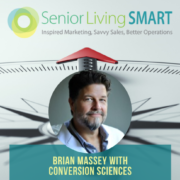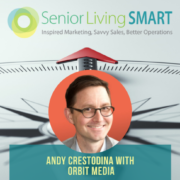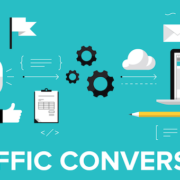Marketing Strategies for Senior Living: The Marketing Hourglass
When it comes to effective marketing strategies for senior living, we follow the marketing hourglass, which our friends at Duct Tape Marketing developed.
The marketing hourglass involves seven important steps: Know, Like, Trust, Try, Buy, Retain, and Refer. This differs from the classic marketing and sales “funnel” approach, which typically involves Awareness, Consideration, and Purchase.
Duct Tape Marketing contends that the funnel ignores an important fact: that happy customers are often your best tools when it comes to lead generation and referral generation. The hourglass approach, on the other hand, takes customers into account (especially in the “retain” and “refer” steps).
Let’s break down the seven steps so you can apply them to your marketing strategies for senior living . . .
Step #1: KNOW
Basically, can people find you? If you operate a senior living community in Dallas, Texas, and someone in Dallas searches on “senior living near me” or “senior living Dallas,” will your community’s website come up on the first page of Google? If the answer is yes, great. If the answer is no (or you’re not sure), then you’ve got some work to do!
For your community to be “known,” you need to create a highly secure and highly optimized digital presence. This includes doing the following (at the very least):
- Make sure your site is optimized with relevant keyword phrases. You want to use keyword phrases that your ideal prospects are searching on. (This requires research and know-how.) Then, you want to use these phrases naturally throughout your site, both on the page itself and in the meta data (the title tag and meta description).
- Make sure your site has SSL security. How to tell? Call up your senior living website in a browser and look at the URL. Do you see a warning that says it’s “not secure”? Google penalizes sites that don’t have SSL security, meaning you’re less likely to rank well in organic search.
- Make sure your site is optimized for mobile devices. More and more people (yes, even seniors) conduct searches on their phones or tablets. Your site needs to automatically “respond” to different devices (and screen sizes). Again, if your site isn’t built for mobile, Google will penalize you.
- Make sure you site is speedy. It needs to load quickly! This is critical for the user experience (no one likes watching an endless pinwheel while a page loads). Again, Google takes note of slow sites as well. Incorrectly sized photos, bloated and unnecessary code, and big videos can slow down sites.
- Make sure your Google My Business listing is up to date. Google cares about Google products. Google consistently serves up Google My Business listings when people search for things, particularly physical locations, like senior living communities. Consider your Google My Business listing as a mini website. Apply the same level of care you would on your main site. Include updated contact info, compelling text, great images and videos, and lots of reviews.
Step #2: LIKE
Once prospects find your senior living website, what happens next? Keep in mind that people have only so much patience when it comes to websites. If they don’t see what they’re looking for within a few seconds, they WILL bounce off your site—and go to a competitor’s site.
To encourage website “stickiness,” make sure . . .
- The website navigation is clear and intuitive. Make it easy for people to work their way through the site. Keep in mind you’ll be dealing with older eyes. Think larger fonts and good color contrasts.
- The keyword-phrase that brought people to the page is relevant and fully “dealt” with in the copy. For example, if someone landed on a page about “senior living community prices in Dallas,” the page better thoroughly deal with that topic and deliver the goods. (Rule of thumb: each page of your site should have one main keyword-phrase focus.)
- The design is welcoming . . . and authentic. DON’T USE STOCK IMAGES. If someone is doing research on senior living communities in Dallas, chances are good they will see the same tired and unoriginal stock images on multiple sites. Don’t let your site be one of them. Invest in custom photography that highlights your community—and that helps people remember it.
- The website is truly helpful. Make sure the site has a Resources section, contact info at the top of every page, and, ideally, some sort of Live Chat function so people can get answers right away.
Step #3: TRUST
You’ve lured prospects to your site. Now, you need to build trust. A variety of “trust signals” exist. The best websites will use a combination.
- Both text-based and (ideally) videos of real people talking about how much they love your community. (A combo of residents and staff can work well! A happy staff indicates a happy place, too!)
- Relevant logos for any awards, recognitions, certifications. Your website—particularly the home page—is a great place to highlight “best of” and other awards.
- In-depth resources that you offer for free. Position your community as the go-to place for information about senior living in your area. Offer educational content on hot topics like financing, how to move, checklists for evaluating options, resources for family members, and so forth.
- A clear and compelling “team” and/or management page. Prospects want to get a sense of the people behind the scenes. Supply warmly written bios and photos that capture the people who bring your community to life.
- Relevant info about COVID-19. For the immediate future, you need to have information front-and-center about how your community is navigating COVID-19. And guess what? This section isn’t static. It NEEDS to change to reflect what’s going on in your community. (Hint: Check out our free resource on how to market your senior living community during a pandemic.)
Step #4: TRY
Today’s prospects expect websites to be interactive. Yours should provide opportunities for prospects to “try” out your community so they can picture themselves or their loved ones living there.
- Offer virtual room builders/floor plans. Room builders allow people to get a sense of space and décor. In addition, they help people envision how their belongings would work in the space.
- Offer “on demand” tours. In this case, we’re referring to a tour you’ve recorded on video. While being able to experience a community in person is always preferable, it’s not always possible—due to things like COVID-19 or even location. If someone in Boston wants to get a feel for your community in Florida, an on-demand tour or other virtual event can help.
- Let people download menus and activity calendars. It’s one thing to tell people about everything your community offers. It’s a whole other thing to allow them to see a breakdown on a real day-to-day calendar.
- Make it easy for people to access your YouTube channel, Facebook, Instagram. Your social media channels are a great place to go “behind the scenes” in your community. While professionally shot videos and pictures are great for your site, your social channels can house the candid shots and videos (which often come across as more authentic and relatable anyway).
- Allow people to schedule tours (in-person or virtual) directly on your site at a day/time that’s convenient for them. This empowers the prospect and eliminates unnecessary back-and-forth between a sales rep and the prospect.
Step #5: BUY
You need to make it easy for prospects to buy from you. Now, we know what you might be thinking: “If someone wants to buy into our senior living community, all they need to do is talk to a sales rep.”
But that’s not how most people buy today. People do their homework first (as we described above). For senior living especially, prospects also try to self-qualify by researching and requesting pricing.
So ask yourself: How transparent is your senior living website when it comes to things like pricing, financing options, and so forth? Even if you don’t list pricing, you need to ADDRESS pricing so that people have a sense of ranges—and an understanding about what’s included. Then, beyond that, how easy is the overall buying process when someone does indeed want to buy?
Focus on the following:
- Evaluate your website from a “I’m ready to buy now” perspective. Is there an area that clearly addresses the buying process soup to nuts? Bottom line: you want to enable prospects to buy from you.
- Audit the overall buying process from start to finish. Begin with the moment someone says “Yes, I want to move in.” How easy is it to make a deposit? What happens next? Do you offer transitional services? Have you streamlined paperwork? Do you provide move-in checklists and downsizing tips?
Step #6: RETAIN
A prospect who becomes a happy resident will be your best form of advertising going forward. So the question is, how do you keep your residents happy?
- Make sure you have programs in place designed specifically for new residents and their families. Think welcome kits, orientations, and “meet your neighbors” events that help new residents acclimate.
- Conduct surveys. We recommend doing surveys two weeks after move-in. Why? Because 17% of all move-outs happen in the first 30 days! If you can get feedback/insight into how new residents are acclimating (or not), you and your team can identify any issues and (hopefully!) address them before someone decides to move out.
Note: The insights you gather during the “retain” step can inform your marketing and sales efforts. For example, use positive quotes from surveys and highlight them on your website.
Step #7: REFER
Did you know resident and family referrals have a 30 – 35 % closing rate? (For comparison, third-party leads close at 3 – 6 %).
- Make sure you have an easy system in place for soliciting referrals from residents and their family members. One idea: “I’ve just moved!” postcards that you supply as part of your welcome kit to new residents. Encourage them to send these to their friends.
- Make it easy for residents and their family members to review your community. In addition to referrals, the words of real residents can be incredibly compelling. Encourage people to leave reviews on your Google My Business page and via social media.








